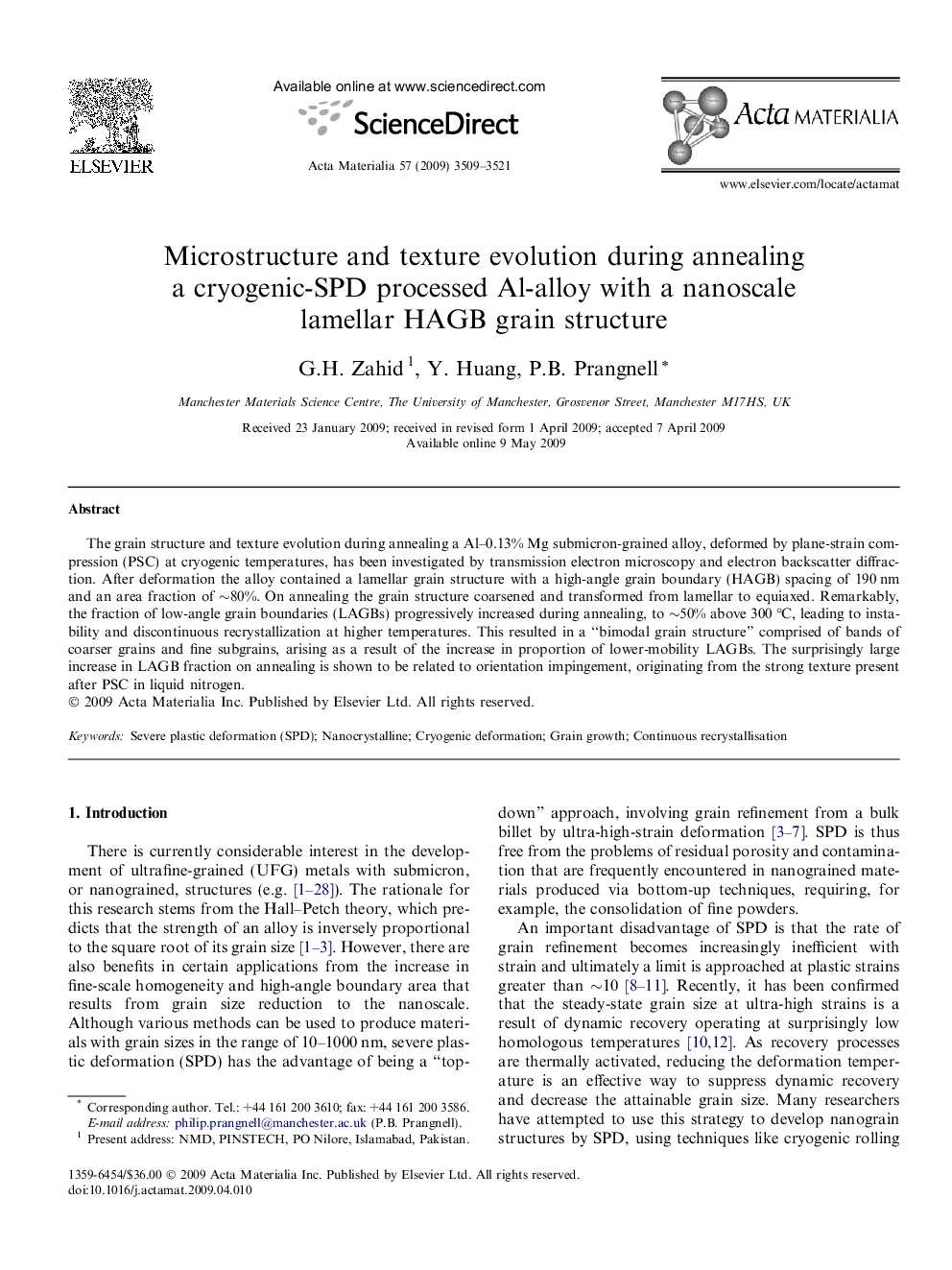| Article ID | Journal | Published Year | Pages | File Type |
|---|---|---|---|---|
| 1448312 | Acta Materialia | 2009 | 13 Pages |
The grain structure and texture evolution during annealing a Al–0.13% Mg submicron-grained alloy, deformed by plane-strain compression (PSC) at cryogenic temperatures, has been investigated by transmission electron microscopy and electron backscatter diffraction. After deformation the alloy contained a lamellar grain structure with a high-angle grain boundary (HAGB) spacing of 190 nm and an area fraction of ∼80%. On annealing the grain structure coarsened and transformed from lamellar to equiaxed. Remarkably, the fraction of low-angle grain boundaries (LAGBs) progressively increased during annealing, to ∼50% above 300 °C, leading to instability and discontinuous recrystallization at higher temperatures. This resulted in a “bimodal grain structure” comprised of bands of coarser grains and fine subgrains, arising as a result of the increase in proportion of lower-mobility LAGBs. The surprisingly large increase in LAGB fraction on annealing is shown to be related to orientation impingement, originating from the strong texture present after PSC in liquid nitrogen.
